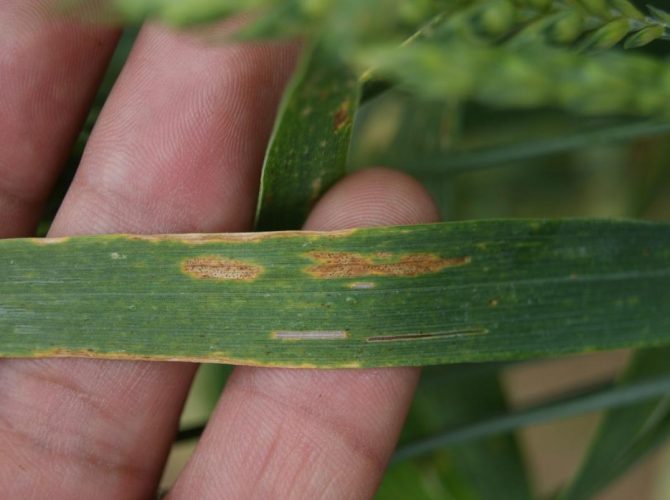Winter Wheat Disease Control Starts Today
15th September 2020

Choosing varieties with high resistance to Septoria is one of the best agronomic tools to help control disease in crops. Two varieties stand out for their Septoria disease resistance, KWS Extase with a Septoria resistance score of 8.1 and Theodore with a resistance of 8.2 by using either of these varieties it will make it easier to control the disease in your crop and improve farm profitability.
Septoria tritici is the most important and damaging foliar diseases of winter wheat in the UK. The pathogen reduces green leaf area for photosynthesis and causes significant yield losses of up to 50% in severely affected crops. Heavy rainfall areas have a higher risk of disease so it is a particular issue for growers in Northern Ireland.
Septoria often results in long oval lesions that when restricted by leaf veins give a rectangular appearance. Water-soaked patches often form, surrounded by leaf yellowing or death. Lesions may merge to form large areas of necrotic brown tissue.
In most years, symptoms develop very early. On young autumn-sown wheat, symptoms may be evident by early December, and throughout the winter on the lowest leaves. During leaf production phases of growth in the winter and early spring, it is common for new leaves to appear green and healthy and for lower leaves to die back with typical symptoms. Stressed crops can show greater levels of infection.
Once a spore has landed on a new leaf, it can take 12 hours for the spore to germinate. Infection of the new leaf usually takes place within 24 hours, providing conditions are damp. Symptoms appear after a 14–28 days. The optimum temperature for Septoria is 15–20°C and symptoms may appear at these temperatures.
For more information on disease control in crops or winter cereal varieties contact your local Fane Valley Agronomy & Forage specialist or call 028 9261 0485.

